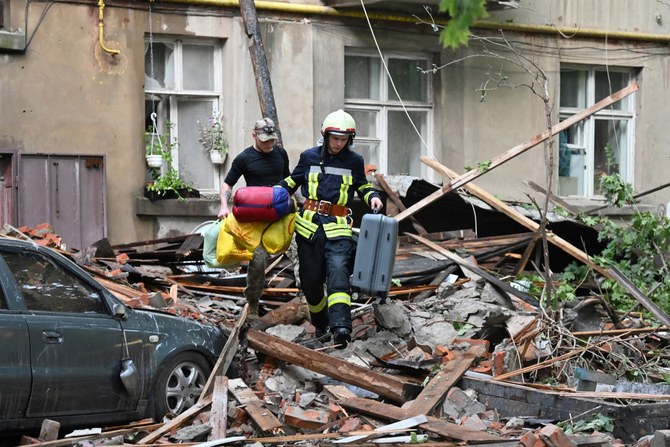Khaled Abou Zahr
Tensions on the front line in Ukraine continue to grow, bringing forward the possibility – as French President Emmanuel Macron declared last week – of a serious and grim expansion of this war further into Europe.
At the same time, other hotspots around the globe, from Asia to Africa, keep heating up. In light of all these events, one cannot help but wonder what a third world war might look like. Obviously, this goes beyond (or before) a nuclear holocaust that would reduce the planet to radioactive waste. Would the new technologies we keep hearing about mean it would be different from the first two world wars?
As we read of new defense tech developments that involve humanoids or drones coupled with artificial intelligence and quantum technology, there is an indirect dissemination of information telling the general public that any potential big war will be similar to science fiction. It will be a war where these drones and humanoids face each other, while children, women and men stay safe at home waiting for a winner. A war where everything is virtual and cyberattacks replace bombs and shells, leaving interruptions to Wi-Fi and short power cuts as the biggest risks.
We will not delve into the point that cyberattacks on key infrastructure, such as energy sites or dams, could cause catastrophic damage. But is this view that many in the general public hold actually true: that they will be safe at home while war takes place in another dimension with lasers and other tech gimmicks we cannot see? A preliminary answer refuting this view comes straight away. It lies in the discreet yet persistent focus of Western leaders on reestablishing a military-industrial capacity. Indeed, all Western leaders are facing the reality that, as war rages in Ukraine, Russia has a military-industrial capacity that overwhelms all of Europe and the US combined.
On the other hand, the US and Europe can only produce about 1.2 million munitions per year to support Ukrainian forces, according to a senior official from a European intelligence service cited by the American media. And so, the war in Ukraine is already giving us a first answer. War is war and will stay a dirty business. And Macron’s declaration on sending troops to Ukraine would not only be a possibility but a certainty if a new world war starts.
If we focus on defense technologies, where does the world stand? In this context, the focus of Western researchers is mainly the competition between China and the US, not with Russia, when it comes to key technologies. It is said that history does not repeat itself but it often rhymes. In that sense, the situation in 2024 resembles the situation in 1935, whether in terms of Western military-industrial capacity or technological competition between the two opposing sides. Moreover, we also notice a similarly troubled world map, where order is no longer clear and conflicts arise in an unpredictable manner, without a clear understanding of the endgame. Conflicts where ideology, brute force and technology all come into the mix. Some even see the Spanish Civil War in many places on the map of the world.
And so, following these lessons of history, how did new technologies impact war? Have they ever prevented the loss of life? The answer is simple and comes in the form of another question. Did this new technology give total superiority to one side and force the other into total submission? Without this, wars take a heavy toll. But this is what happened when vehicles replaced cavalry or when air superiority gave a clear advantage, with soldiers and civilians alike paying a heavy price. One might even say that, today, the length of time for which total superiority lasts has shrunk. It is becoming rare for one side to maintain indefinite total superiority over the other.
The situation in Ukraine with its rules of engagement is probably the best answer to what a world war might look like. The reality is that nothing has changed and war will be a meat grinder in the worst possible sense. Once drones match drones, humanoids match humanoids, AI matches AI and quantum computing matches quantum computing, all technologies and their use will cancel each other out. Then, war will take its usual and ugly form of men killing men and trenches that look like the ones used in the First and Second World Wars, only with more powerful bullets. Thinking, as many of the public tend to believe, that robots and drones will do the fighting, just as apps allow food to be cooked and delivered for us, is complete delusion.







